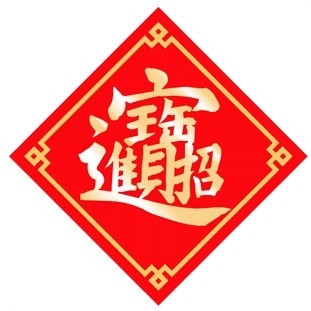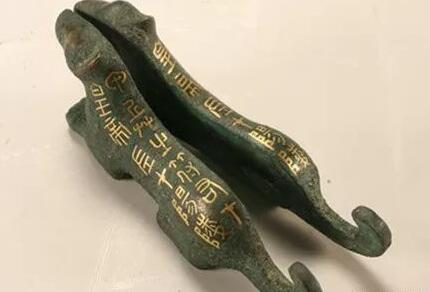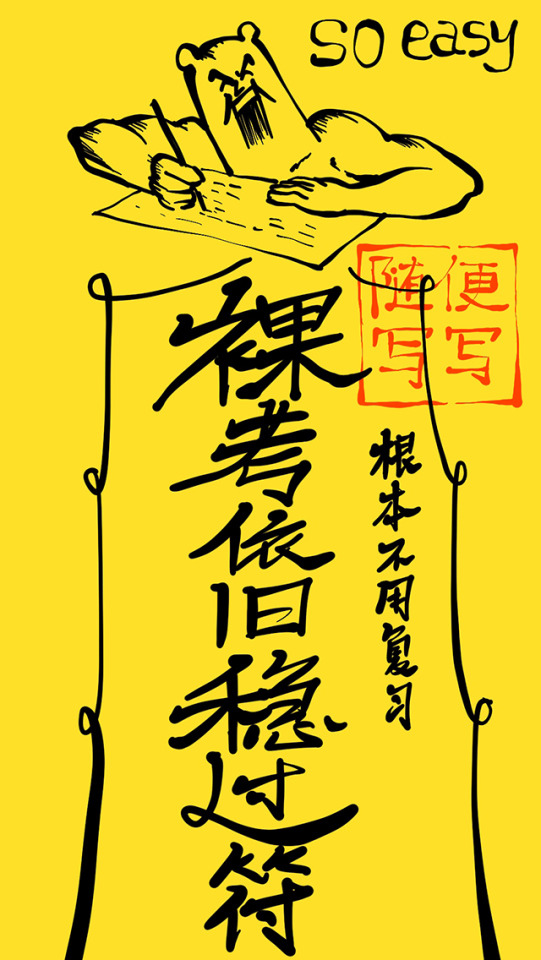Tumblr Boy Covered in Flowers Drawings
(Part 1 Here) (Super-long post ahead!)
Talismans/Charms/符箓/符咒


The talismans in both the live-action and animated shows originate from Daoist talismans, which in turn developed from early shamanistic traditions. Like what Lan Wangji tells Jiang Cheng in the show, real life Daoist talismans are usually made for beneficial purposes, one of which being to ward off evil spirits. Other purposes of such talismans include everything from curing illnesses to controlling floods to communicating with the gods. In order to call forth gods to accomplish these goals, writing/drawing on the talismans usually include "incantations" that start with "勅令", or "command", on the very top. The word can be traced back to 敕令, which refers to orders from an emperor, but since 敕 is traditionally reserved for the emperor, Daoists use 勅 on their talismans. The meaning is also slightly changed, as 敕 has 攵 on the right, implying the order is written; meanwhile 勅 has 力/force on the right, implying the order is executed by "force".
The body of the talisman sometimes include complex combinations of Chinese characters (合体字/複文) that are more like visual symbols and do not have their own pronunciations. On a talisman these "combination characters" are usually arranged in a specific pattern. These combination characters aren't exclusive to Daoism, however. Below is a well-known combination character created from the word 招財進寶 (lit: "gaining wealth and attracting riches"), commonly seen pasted on doors and windows around Chinese New Year for luck.

Other elements of a talisman are mostly made up of symbols such as the yinyang symbol, eight trigrams, and special strokes that also hold symbolic meaning.
A fun detail from the animated show: in the scene where Jiang Cheng shows the inverted evil-warding talisman to Lan Wangji, we can see that WWX's addition in blood near the top turns the 人 part into 夷, as in 夷陵老祖/"Yiling Founder", giving the viewer a solid hint as to who changed the talismans.

Sword (Jian)/剑

Jian sword refers specifically to pointed double-edged one-handed straight swords. The sword is important to religious Daoism, but its origin as a culturally-significant symbol lies in history.
The sword was an actual weapon used on the battlefield before Han dynasty (before 202 BC), and it was that time, long long ago, that the sword was associated with certain human qualities, such as an unyielding sense of justice. From there, the jian sword eventually became an ornamental item symbolizing high social status. Evidences of this can be found in the Book of Rites (《禮記》), a book detailing etiquettes and rituals for nobles of Zhou dynasty (1046-256 BC). For example, a chapter mentioned "when looking upon a gentleman's attire, sword, and carriage horse, do not gossip about their value" ("觀君子之衣服,服劍,乘馬,弗賈"). One such decorative jian sword artifact even survived to this day:

Sword of Goujian, King of Yue (越王勾践剑), part of the collection of Hubei Provincial Museum. Note: the engraved "bird-worm seal script" (鳥蟲篆; basically a highly decorative font) text says "Goujian, King of Yue, made this sword for his personal use" (戉王鸠浅,自乍用鐱).
By the Eastern Han dynasty (25-220 AD), Daoism had established itself as a folk religion. Many of the customs and etiquettes passed down from pre-Qin dynasty times were mystified and given religious importance in the then newly-established Daoist belief system, including the aforementioned etiquettes involving the jian sword. People came to believe the jian sword as holding magical properties, a weapon gifted by heaven itself, allowing its wielder (usually a Daoist priest) to fight and triumph over demonic spirits. As the jian sword became more and more of a Daoist ceremonial item than an actual weapon, it also slowly changed to this familiar form today:

(Modern ceremonial Daoist jian swords. Fun fact: it is widely believed that jian swords made entirely of peach wood have better demon-banishing abilities than regular swords, since peach trees were said to have demon-warding effects.)
So, a sword that was worn to show respect, used to showcase social status AND have demon-warding powers? Does that sound familiar?






It was no accident that the day WWX refused to take his sword with him (since he gave his core to Jiang Cheng so Jiang Cheng could continue to use swords) was also the day the other sects/clans started to alienate him. The sword symbolized status, and WWX was only the son of a servant, a "lone genius" (一枝独秀/"a lone blooming branch", in the words of Jiang Cheng) among all the young nobles, so it was fitting that WWX abandoned the "righteous" sword path to walk a new and unique path in order to reach his full potential.
"Fly whisk"/"duster"/fu chen/拂尘

Remember the funny-looking duster-like objects that Song Lan and Xiao Xingchen held in the live action series? Those are called fu chen, or "拂尘" in Chinese, and hold symbolic meaning in Daoism. To explore that meaning, let's first explain the name "fu chen". Fu chen literally means "brush dust", so the Chinese meaning is really more like "duster" than the common English translation of "fly whisk". But then what sort of "dust" is it really "brushing"?
The concept of "dust" (尘) in both Daoism and Chinese Buddhism refers to the normal secular human society, with all of its material objects and worldly wants and worries. Thus, the symbolic meaning of fu chen/"duster" is to clear these worries and wants–in other words, worldly attachments–from one's mind, allowing one to exit the secular world. For this reason, in China, the process of abandoning one's normal life in society for the life of a Daoist priest or Buddhist monk is called "出家" (lit. "exiting home") or "出世" (lit. "exiting world"; world here meaning society).
Since both Song Lan and Xiao Xingchen are Daoist priests (they were both referred to as "道长"), and both wandered through the world banishing evil rather than settling down somewhere and integrating into society, it was a nice choice to have them each hold a fu chen.
"Stygian Tiger Seal" or "Yin Tiger Seal"/阴虎符


This one is a non-Daoist reference, but it's still rooted in Chinese history, so here we go.
The fact that the Stygian Tiger seal is called a "tiger seal"/虎符 and has two halves that unleash powerful resentment energy when fitted together (this mechanism is present in both book and live-action but is absent in the animated show, where the two halves appear to be conjoined), points to the inspiration being the tiger amulet. In imperial China, tiger amulets/虎符 are metal tiger figurines that split into halves lengthwise, and serve the important purpose of approving military deployment. The imperial court would hold the right half, while the left half would be issued to military officials.

When army deployment is needed, the official would bring the left half of the figurine to the imperial court, and if it combines with the right half into a whole figurine, then the military deployment would be officially approved. Historically, tiger amulets are a security measure designed to give the imperial court control over the military.
Finally, some joke talismans I found on the web:

Translation: "No need to work overtime"; "hold the talisman and chant 'PIKA PIKA'", "will confuse your boss so you can get off work early".

Translation: "passes exam without studying", "bullshitting it", "no need to study". (I think I'll need one of these lol…………………………..)
valenciaflocruing.blogspot.com
Source: https://thacmis.tumblr.com/
0 Response to "Tumblr Boy Covered in Flowers Drawings"
Post a Comment